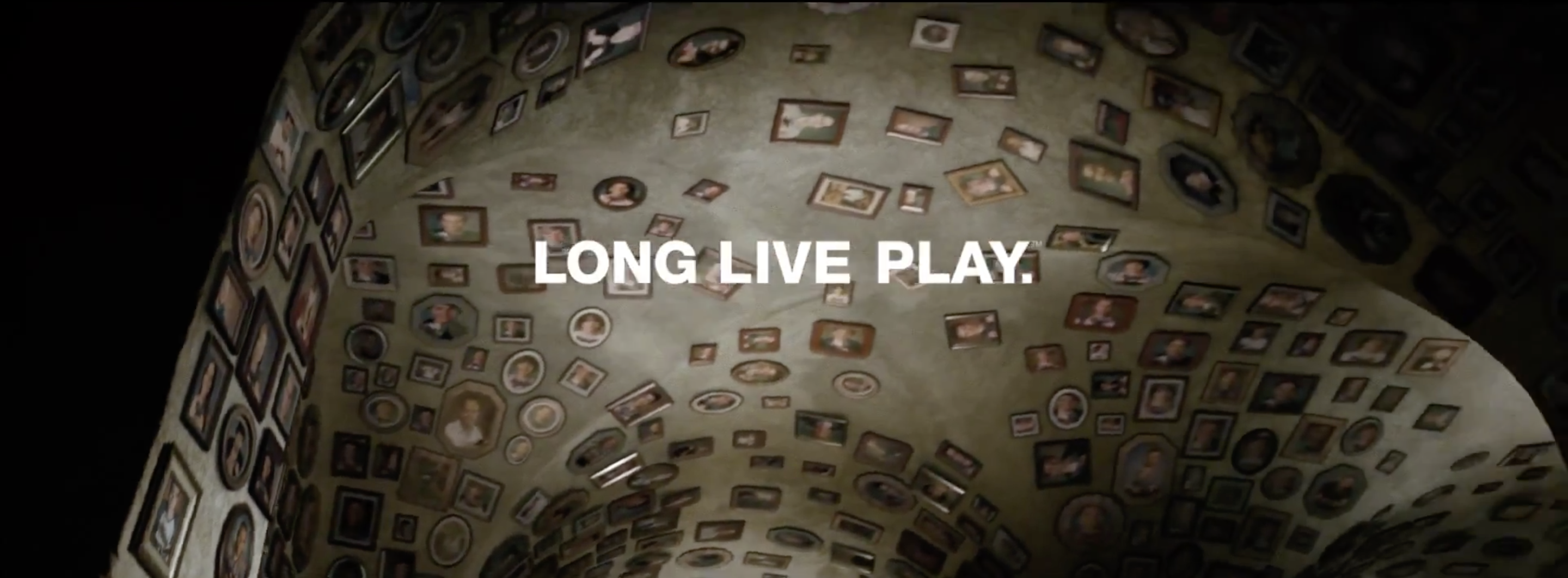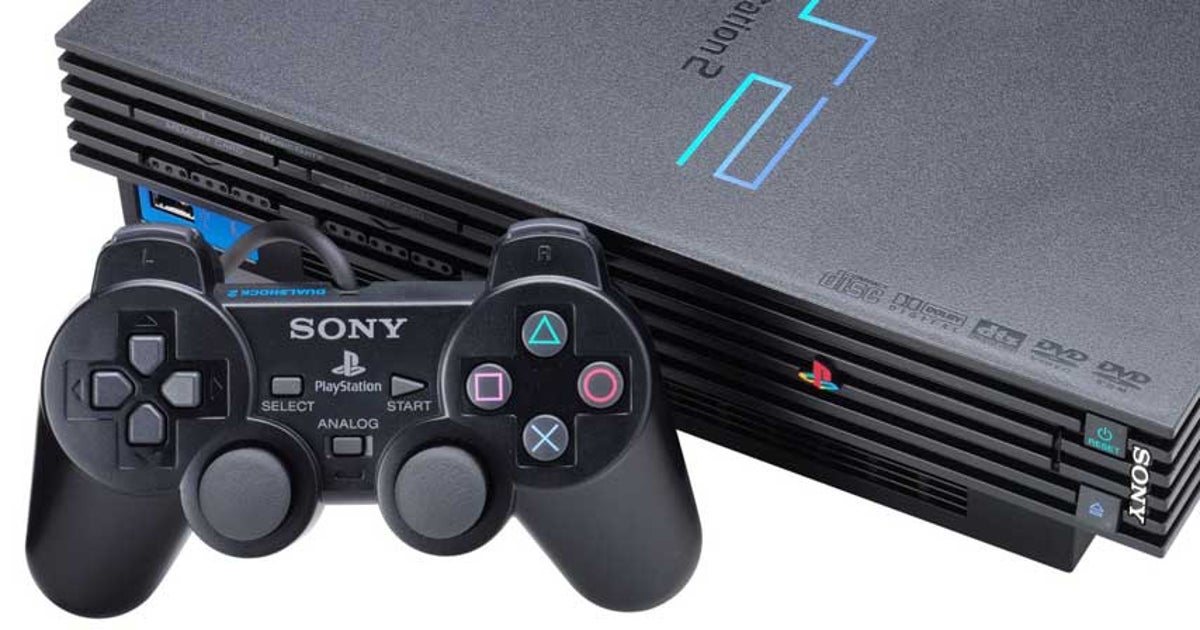It's only a matter of time before Sony kills access to PS3 and Vita games entirely.

www.vice.com
"I love my Vita.
Sure, the back touchscreen never worked well, and the shoulder buttons always felt a little too wobbly. But after years of avoiding video games, it was the impulse purchase one chilly, drizzling day that reminded me why I loved video games to begin with. It felt good in my hands, and even if it never fit in anything but my most pouchy of hoodies—I carried it everywhere.
I played games, listened to music, watched YouTube, hell—I even tweeted from it.
The Vita was where I finally played visual novels all the way through, exhaustively. I found what happened to the world of
Wizardry-likes outside of
Etrian Odyssey. I revisited the PlayStation (with L2 and R2 remapped to the front screen). I finally played From Software's
Shadow Tower. Even my partner loved it, obliterating indie game after indie game.
We learned its quirks and workarounds. We made concessions to the proprietary memory card, the bulky power cable that didn't fit in the soft case. We even made peace with the unusability of the Vita PSN store (using the website to purchase, sort my library, and push games to the handheld).
Even when I'm more at home on my PS4 or PC these days, my original Vita still works. It's charged and ready to go at a moment's notice. It still plays games, even if Sony has abandoned the YouTube and Twitter apps on the device over time.
But this week,
Sony pushed an update to the PSN store that seriously hinders how I use the Vita. And not just it, but my PS3.
All of our Vitas and PS3s.
The PS5 is coming, the console that Sony will hitch it's stock price on for the next 6 or so years. Maybe less, maybe more. So the PSN web store is getting "upgraded" to pave the way for their new console.
No more buying games or managing your downloads from the more efficient and user-friendly website. Now PS3 and Vita users will be forced to work exclusively through their consoles.
You're extra screwed if you own a PlayStation Portable. Those are getting cleared out of the web store too, and after losing their console-based store in 2016, now the only option will be to make purchases and downloads from the PS3 or Vita. It's honestly pretty shameful.
If that was it, it would be enough. But it won't end there. With Sony, it never does. This isn’t the first time Sony’s tinkered with these consoles in a way that limited the original promise either. We’ve been here before. After all, remember when the PS3 could play PS2 games?
That was the promise at launch. The original 20 and 60gb versions both had hardware emulation for the Playstation 2 in November 2006. By October of 2007. These SKUs lingered on in Japan for another year, but then backwards compatibility on a hardware level was dead going forward.
Hope surged in June of 2009 with Sony
patenting software emulation for PS2 games. But
speaking to Kotaku in August, Sony Computer Entertainment of America's director of marketing John Koller, said "Now that we're at a point where we're three years into the lifecycle of the PS3...there are so many PS3 disc-based games that are available that we think — and noticed this from our research — that most consumers that are purchasing the PS3 cite PS3 games as a primary [reason].” The PS3 Slim wouldn’t feature backwards compatibility at all.
Three years into the PS3 lifecycle and the dreams of everyone who traded in their PS2s to buy PS3s were as dead as many of those launch models
This foreshadowed a trend in Sony's thinking. Three years ago, Sony's head of global sales, Jim Ryan made headlines by saying, of PS1 and PS2 games, "
they looked ancient, like why would anybody play this?"
Sure, plenty of consumers only care about the newest, blockbuster games. The ones that maximize the latest technology Sony and Microsoft can squeeze into their "little" $600 boxes. We like the New. We've been conditioned to like the New. To be dazzled by "progress." Even to see the old, as Ryan does—inferior, unworthy.
We'll ignore the fact that retro and throwback games featuring visuals modeled after PS1 games (and earlier) are popular with consumers and developers alike. That lo-fi and physical media carry a cache of tangible, practical cool. Or that Sony is absolutely aware of the vocal demand for backwards compatibility (and that Microsoft, GoG, and Steam have all shown the success of historical games catalogs). Jim Ryan is pushing an ideology here as much as he’s trying to directly sell. It’s a laser targeted bit of marketing bullshit designed to do two things:
First, it’s hiding the fact that Sony doesn’t care about the margins on old games. If we assume they get the industry standard of 30% for platform royalties—30% of $5 or $10 isn’t the kind of money Sony wakes up for. Especially not the small numbers old games tend to sell. Every person buying a PS5 will likely buy Demon’s Souls 5. At $70, that’s a shitton of money. But the original Demon’s Souls on PS3? It’s an embarrassment to shareholders having something old and at a bargain price on their ecommerce portal.
But the other thing Jim Ryan is doing here is programming consumers. It’s low-key conditioning. “See that mountain? You can climb it.” has become jokingly synonymous with Bethesda’s approach to open world design, consumers of Bethesda games have come to expect it or something like it.
“See those old games? They’re trash,” is what Sony hopes their consumers will come to believe. Because the more they bake “Newer, Better, More Expensive” into their own personal worldview—the better for Sony’s ongoing sales of new hardware and especially first-party games.
Money is boring. Capitalism is boring. They’re not interesting arguments, and yet it’s crucial we talk about them because if we don’t we can’t fracture these marketing mythologies and understand what is really being communicated to us.
Take the famous E3 of 2013 where then-President of SIE Worldwide Studios, Shuhei Yoshida did a skit with former Vice President of Publisher and Developer Relations at Sony Interactive Entertainment, Adam Boyes. Microsoft had fumbled badly about how used games would work with the Xbox One. And Sony saw a prime business opportunity to turn public opinion in their favor overnight.
How do you trade used games on the PS4? You simply hand your buddy the game. Done. This was a win for Consumer Rights. The crowd went wild. Yoshida was a Real One. He truly cared about The Gamers.
Except…He didn’t. Arguably no one at Sony did. This was pure marketing bullshit. Expensively concocted to obfuscate the fact that Sony had stopped caring about the margins on used games, and had figured out a workaround for making money on all games that would become the standard—digital delivery and DLC. Discs would fall by the wayside, PS+ subscriptions would become mandatory for multiplayer (with the carrot of monthly "free" games). And if consumers desperately wanted physical media, then they’d still have to pay full price for DLC. All the DLC.
But in that moment, consumers believed that Sony was in their corner, that Sony was their friend. They weren’t then. They aren’t now. This is all part of a mass-marketed fiction designed to sell more consoles, just like the fake, mass-market marketing campaigns called “console wars” which Warcraft-like created opposing factions of consumers to do direct-to-consumer marketing for them.
When the PS3 came out, backwards compatibility was a major selling point for an anemic launch (this has been Microsoft’s game for a while now too). After all, Sony was trying to get consumers to drop $600 on a yet-unproven console. And PS2 trade-in credit was tempting, but it’d lock you out of your old games.
Sony’s decision to shove the Emotion Engine and Graphics Synthesizer inside the PS3 eased this choice for many consumers. This wasn’t Sony making a play for historical preservation or thinking of your personal archives. That’s the story they wanted to tell. It made them seem cool and enticing when their launch lineup didn't. This was never going to be a long-term option.
Console manufacturers aren't invested in so-called "legacy content." The margins are slim, the interest is substantially lower than the mass market interest in New Shit.
And we've basically accepted this. Sony doesn't need to include backwards compatibility to sell PS5s. The bid didn't work with the PS3 in the end. And full price remasters of old games have proven much more profitable on the PS4 than the slim sales numbers of so-called "legacy content" ever could.
The only reason the PS5 is getting backwards compatibility is because Demon's Souls alone isn't going to move new consoles on its own, and bringing the recent generation over is much easier between these two generations. Sony learned the lesson from the PS3 that having a complicated architecture is like having weird parents—no one wants to come to your house to play.
But it won't last. Eventually even the PS4 will be cut loose, too. Shareholders don't get excited seeing old games sold cheap on their websites. Hardware will get deprecated, it will stop functioning, and then our options to play those games will become even more limited.
All these games, more or less exist. They will continue existing unaltered until the last PS3 dies beyond repair and the Blu-Rays erode beyond salvation. Without Sony taking a vested interest and a firm commitment to backwards compatibility, preservation, and allowing consumers access to these games—the best we can hope for is the work of emulator developers and the people who create ROMs and ISOs outside of approved channels to maintain even some semblance of what these games were.
Because when access is shut off in official channels—and it always will be, in the end, because capitalism is a consumptive process that's at odds with longevity and preservation—the only option to preserve and archive these works is through unofficial, often extralegal, channels.
Right now, I'm in the middle of playing
Digital Devil Story: Megami Tense_i. The first one. Never released outside of Japan. It's the beginning point for the later _Shin Megami Tensei franchise, that gave birth to the now runaway, global hit sub-franchise Persona.
It's clunky, old. The sprites are hazy reduced suggestions of what they would come to look like. They have very limited animation, if they're animated at all. It's ugly, it's antique, it's beautiful.
I can only do this because of emulation. The reverse engineering prowess of the emulator developers who pulled apart the Famicom and allowed modern PC hardware to communicate in its language. Also the exhausting work of a translator turning coded Japanese script into English. I had to patch it to play it. But if you're doing a historical look at a franchise, you have to do the history. Atlus, Namco, Nintendo—they don't have a monetary interest in this game. It isn't financially worth it to them, if they even preserved the source code or art assets.
Maintaining archives, even privately-held corporate ones, costs more than it's worth in quarterly earnings calls. But for an art form to grow and have a history—this has to be a decision based on principle. The value in preservation is the preservation itself.
Historical preservation of games only gets us so far though. For critics and academics, it's useful to at least have some version of its original context somewhere. The record of existence, playable only at a museum or in an archive. This is existence. But access is once again limited. You have to go to these places.
Right now, my PS3 is on the floor of my living room. It's waiting to be hooked up, so I can revisit Boletaria in some way (itself a hollowed, disconnected version because Sony shut off the servers last year). It doesn't fit nicely on the bookcase. The PS4, Switch, and TV take up all the reasonable amount of space.
To be honest, I'm not sure how much longer for this world it is anyway. It sounds like a diseased geriatric doing a stress test. It's slow, much slower than it used to be, even with a new hard drive and refreshed Blu-ray drive. What is repairable, has been. When it goes, the only available option is to replace more parts (best case) or find a whole new one (a proposition that has already become more expensive since Sony announced zero backwards compatibility and the web shop shutdown).
Or I can pay $70 for the New
Demon's Souls after paying $600 for a PlayStation 5. But the original vision of the game? The one that garnered a cult following, launched an even bigger franchise, and spawned a genre with countless imitations? For me, and millions of other consumers now and in the future—that's gone.
All those bloodstains and glowing messages, and ones that could be?
Lost forever.
With the disconnection of the PS3 and Vita from the website, Sony is sending a clear statement of intent. They don't care about these consoles anymore. They're too old to be viable for them. Eventually,
as we saw with the Wii, or Wii U, and 3DS (
in Latin America and the Caribbean) stores, they will be gone entirely.
The bottom line must be preserved. Never the games that originally built it.




